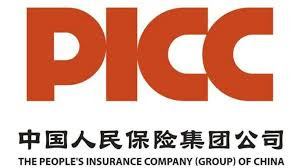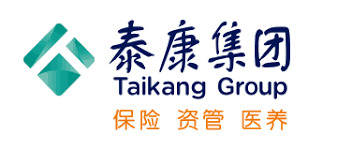Korean Banks and Retail Reportedly Out of Gold
Plus 5 other bellwether (indicators) of gold and silver shortages
a "bellwether" is a sheep with a bell around its neck that led the flock. This imagery translates well to the idea of leading indicators in various fields. Below are six bellwether’s indicating shortages in gold (the silver story will run separately)
I. We first reported on the Bank of England Gold default just recently.
II. Then about 6 days ago we wrote about China’s Shuibei Gold market experiencing significant Gold shortages.
III. Then about 4 days ago we wrote about China’s pilot program with 10 insurance companies who are accumulating Gold to bolster their balance sheets. We first received this lead from Eric Yeung.
IV. Now we are the first US Media to report on South Korean’s Mint unable to produce gold for Korean banks and that it is reportedly hard to source on a retail level as well.
V. All of this happening simultaneously while Central Banks are accumulating gold at break neck speed and breaking records.
VI. Don’t forget that here in there USA there is whispering or rumors that US Treasurer Scott Bessent is considering revaluating US gold inventories to address the US debt crisis. We’ve written extensively about this running all kinds of scenarios. Some seem far fetched but like my colleague Doug Casey often says “Anything is possible”
The global gold market is experiencing unprecedented shifts, with recent developments pointing towards a potential surge in gold prices. As we connect the dots between various events unfolding across the world, it becomes clear that we may be on the brink of a significant gold rally.
Supply Shortages and Institutional Demand
The Bank of England, a cornerstone of the global financial system, has reportedly faced challenges in meeting gold delivery obligations, quoting lead times of over eight weeks. This unusual delay suggests a tightening supply in the institutional gold market. Simultaneously, China's largest retail gold market in Shuibei has experienced shortages, indicating that the supply crunch is not limited to institutional levels but is also affecting consumer markets.
Adding to these supply concerns, the Korean Mint has reportedly been unable to meet the demand for gold bars from banks. This development is particularly noteworthy as it demonstrates that even government mints are struggling to keep up with the increasing demand for physical gold.
China's Strategic Move
In a groundbreaking development, China has launched a pilot program allowing insurance companies to invest in gold for the first time. This move could potentially inject up to 200 billion yuan ($27.4 billion) into the gold market. The program, which became effective on February 7, 2025, permits ten major insurance companies, including industry giants like PICC Property & Casualty and China Life Insurance, to allocate up to 1% of their assets to gold.
This strategic decision by China serves multiple purposes. It allows insurers to diversify their portfolios, optimize asset allocation, and enhance risk management capabilities. Moreover, it provides a new avenue for medium to long-term investments in a climate of economic uncertainty and geopolitical tensions.
Global Economic Context
The timing of these events is crucial. Gold prices have already surged about 40% since late 2023, driven by economic and geopolitical risks during the second term of US President Donald Trump. The precious metal has been viewed as a safe-haven asset during times of uncertainty, and current global conditions seem to be amplifying this perception.
Potential Price Surge
Given these factors - supply shortages, increased institutional demand, and China's strategic gold investments - it's conceivable that gold prices could experience a significant upward trajectory. The convergence of these elements creates a perfect storm that could push gold prices to unprecedented levels.
While predicting exact price movements is always speculative, the current market dynamics suggest that gold reaching $3,500 per ounce before the summer of 2025 is within the realm of possibility. The recent all-time high of $2,882.16 set on February 5, 2025 could be just the beginning of a more substantial rally.
As global economic uncertainties persist and traditional investment avenues face challenges, gold's appeal as a store of value and hedge against inflation continues to grow. The combination of supply constraints and increasing demand, particularly from major players like Chinese insurance companies, could create a significant imbalance in the gold market.
Investors and market watchers should keep a close eye on these developments. If the current trends continue and intensify, we may indeed witness gold prices soaring to $3,500 or beyond before the summer of 2025, marking a new era in the precious metals market.
Gold Investment Pilot: Implications for Insurance Companies and Market Dynamics
Leading Insurers Positioned to Benefit from Pilot Program
The first batch of 10 pilot projects has been identified, with major insurance companies set to benefit. Participants include PICC Property and Casualty Insurance, China Life, China Taiping Life, China Export & Credit Insurance Corporation, Ping An Property & Casualty Insurance, Ping An Life, China Taiping Property and Casualty Insurance, China Taiping Life Insurance, Taikang Life Insurance, and New China Life. The pilot primarily involves large, well-established insurers with strong investment and research capabilities. Listed insurance firms are expected to benefit directly, with improved investment stability and long-term return potential.
Enhancing Asset Allocation and Risk Diversification
Gold investments provide insurance funds with a hedge against market volatility and a tool for portfolio diversification. As a precious metal, gold exhibits low correlation with traditional assets like stocks and bonds, making it an effective stabilizer. In periods of economic uncertainty or heightened market fluctuations, gold is expected to act as a "ballast" asset, reducing overall portfolio volatility.
Insurance funds, given their scale, must balance security, liquidity, and profitability in asset allocation. Gold aligns with these investment objectives by offering a hedge against inflation and providing insurers with additional flexibility and investment options.
Controlled Investment Scale and Market Impact
The 10 pilot insurers collectively manage approximately 19.95 trillion yuan in total assets. With a regulatory investment cap set at 1% of total assets, the estimated gold investment size currently stands at 199.5 billion yuan, approaching 200 billion yuan. This level of allocation could influence gold supply, demand, and pricing. As the pilot expands and insurers' total assets grow, gold investments and their market impact are expected to rise.
Balancing Returns with Price Volatility Risks
Gold, as a global asset with high liquidity, enables insurers to participate indirectly in international markets, enhancing global asset allocation. During periods of heightened volatility and inflationary pressure, gold prices tend to rise, helping insurers preserve value and improve long-term returns while mitigating potential "interest rate spread loss" risks.
However, with gold prices already at elevated levels, insurers must carefully assess market trends and employ hedging strategies to manage price volatility risks. The effectiveness of gold investments will depend on insurers’ ability to navigate market fluctuations and implement sound risk management strategies.
Strategic Considerations for Investors
The gold investment pilot represents a key step in deepening insurance fund reforms, expanding asset allocation options, and promoting long-term, high-quality industry development. As a low-correlation asset, gold enhances portfolio stability and supports insurers' ability to function as long-term capital providers for the real economy.
The 10 participating insurers are industry leaders with established investment and risk management capabilities. Their first-mover advantage in gold investment positions them to accumulate experience and maximize long-term benefits. Recommended focus should be on China Pacific Insurance, New China Life Insurance, Ping An Insurance, China Life, and China Property Insurance.
Gold Shortages at World's Largest Gold Market
1,2,3. First Shanghai Gold Arbitrage. Second, no Gold in Bank of England's Vaults. Now the Shuibei gold market is "out of stock."
China announces Pilot Program to allow Insurers to invest in Gold
As the Bank of England faces technical defaults on bullion withdrawals













